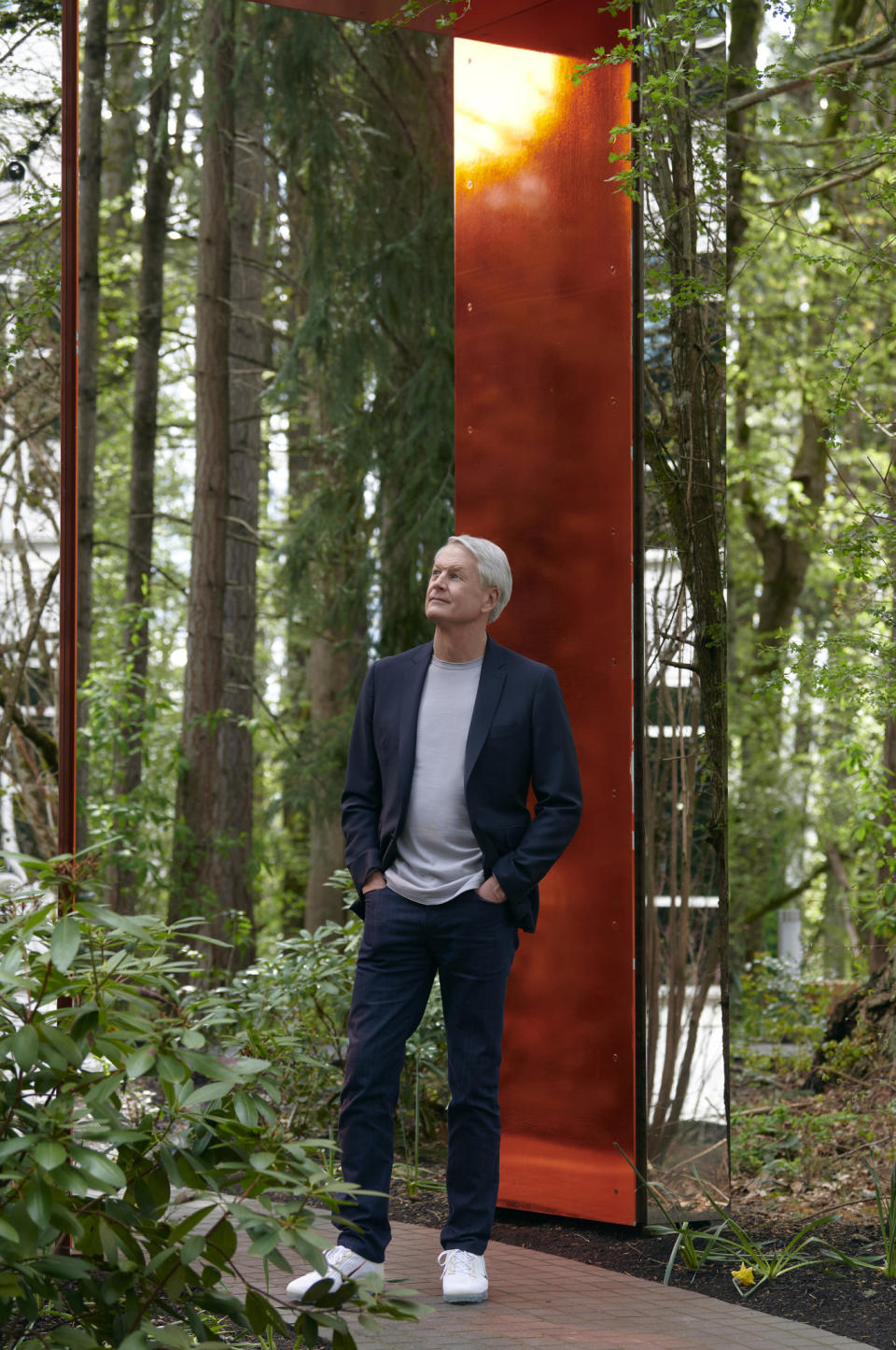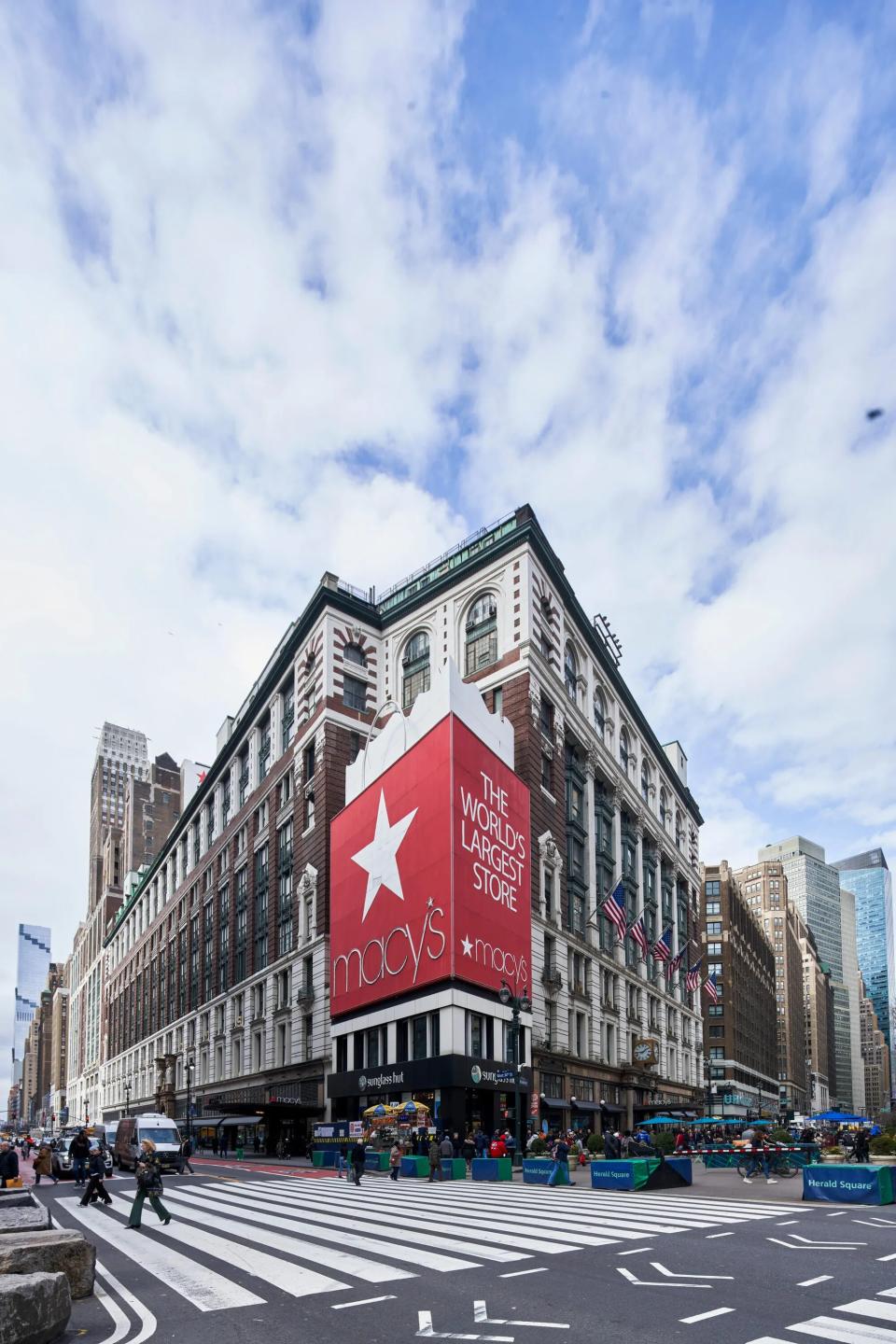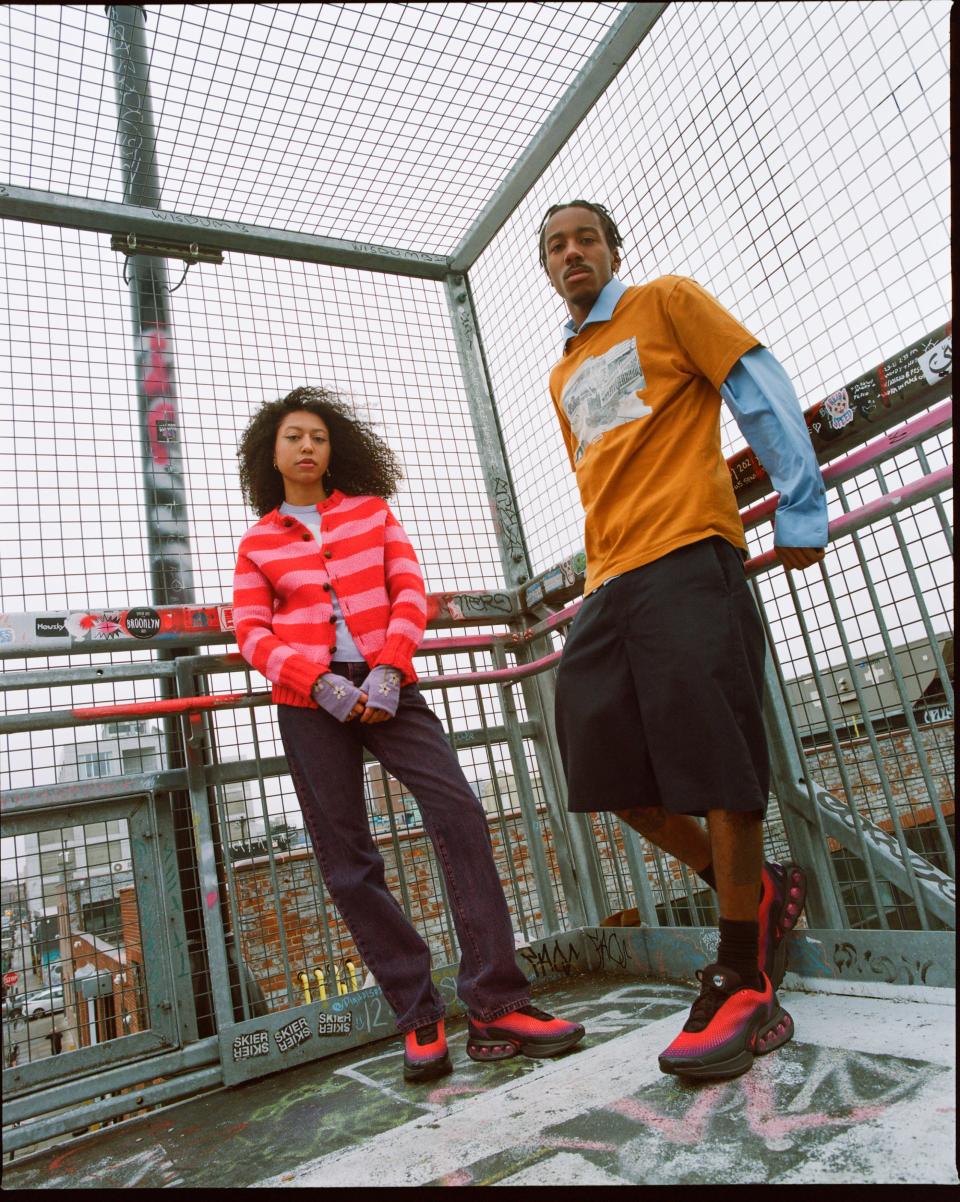What Does Nike Need to Get Its Mojo Back?

When most Major League Baseball teams took the field Thursday for the start of their 2024 season in the U.S., many fans’ eyes might have been on more than just the strike zone. Whether in the stadiums, tuning in on TV, or viewing via social media, they also could have been peering closely at their favorite players to see if their uniform pants were transparent.
The sheer fashion trend all over the designer runways recently isn’t typically associated with professional male athletes, but it has been a swirling controversy since the start of spring training, and has put the league, Nike and Fanatics, the manufacturer of the uniforms, on the defensive.
More from WWD
Cactus Jack to Create College-themed Collection for 28 Schools
Outrage Among Politicians, Fans Over Nike's New Soccer Shirt
Former North Face Creative Director Tim Hamilton Joins Nike in Men's Design Role
While neither company took ownership of the controversy, for Nike, which updated the uniforms this season to be more stretchable, sweat-absorbent and breathable, it is just the latest in a string of challenges facing the $51.2 billion activewear behemoth, which marked its 50th anniversary last year and may be showing signs of its age.
Nike ended its longtime deals with Tiger Woods and has parted ways with other leading sponsored athletes, including pro tennis player Taylor Fritz. FC Barcelona terminated its contract with the company and Nike was also lambasted for its new soccer kit for the England team, which tweaked the colors of the St. George’s Cross, altering them from the traditional white and red combination to red, purple, blue and black for the Euro 2024 tournament that gets underway in June.
On the upside, though, Nike recently scored a major win by ousting its rival Adidas as the German Football Association’s official kit supplier for its national soccer teams starting in the 2027 season and running until 2034. Another bright spot is Iowa State basketball player Caitlin Clark, whose popularity has soared among women, men and children since Nike first signed her in 2022.
Of the recent missteps, Neil Saunders, managing director of retail at Global Data, pointed to the MLB uniform issue as being “the biggest potential challenge as they undermine Nike’s stances of being high-quality and having very reliable products.”
Although Nike still has an enviable position in the market — it remains by far the market leader in activewear — and is seen by most consumers as being “a leading sportswear company,” it is in danger of “losing its edge — especially as younger companies like On are seen as being more innovative and interesting,” Saunders contended. “There is a sense that Nike is on the back foot right now and it needs to work hard to get its mojo back. The latest stumbles do not help it to achieve this.”
While companies like On and Hoka are tiny compared to Nike, they are generating “fantastic growth and gaining ground with customers,” he said. “This is a threat to Nike. As the biggest player in the market, the danger for Nike is that it sees its share eroded by a lot of other players nibbling away. They don’t need to take big bites to have a material impact.”
Even as up-and-comers like On and Hoka nip at its heels, Nike has been dealing with mixed sales, including sluggish growth in China in the third quarter of fiscal 2024, its most recent. This has led to rumblings among analysts that, given the company’s woes, Nike chief executive officer John Donahoe’s days could be numbered. Donahoe joined Nike in January 2020 after stints at ServiceNow Inc. and PayPal Holdings. “Nike leadership is in the hot seat,” wrote Stifel analyst Jim Duffy, and a change at the top could help boost the stock price. Morgan Stanley analysts agreed that a CEO change could “reignite bullishness on the stock.”

But Donahoe is digging in his heels and taking steps to address the issues.
When sluggish second-quarter earnings were released at the end of last year, the company revealed $2 billion in cost-cutting measures over the next three years as a way to streamline the organization. This included layoffs — some 1,500 jobs, or 2 percent of the workforce was eliminated in February — simplifying product and increasing automation.
But these cuts could ultimately wind up hurting the company in the long run, according to Williams Trading analyst Sam Poser.
“Nike’s current C-suite leaders lack the levels of brand and Nike institutional knowledge that the leaders had in 2015,” wrote Poser in his pre-Chistmas notes that were titled “The Bain of Nike’s Existence,” (a double entendre about Donahoe’s Bain consulting and nonproduct-oriented experience). “Many seasoned Nike executives across many parts of the corporation were let go or have left the company on their own accord since 2020.” And some newer hires like chief technology officer Muge Erdirik Dogan, a former Amazon executive, lacked the brand-first knowhow, according to Poser.
Having issued a sell rating on Nike’s stock, Poser compared the company’s situation to breaking a bone — “the problems can happen very quickly, but the fixes always take longer. This feels like a version of that. Again, Nike’s not going away or anything. They’re a great big company,” he said.
Even Nike recognizes its challenges. On the company’s third-quarter earnings call last week, Donahoe said: “Looking at our business, Q3 performed in line with our expectations. That said, we know Nike is not performing at our potential.”
In the third quarter, the athletic giant said revenues grew marginally over last year to $12.4 billion, ahead of the $12.28 billion expected by analysts and ahead of prior guidance from the company. Net income was down 5 percent to $1.2 billion.
Changing tack
In a sign of the changing tides, the company is now backpedaling on some of the initiatives that it had instituted in the past, notably its Consumer Direct Acceleration strategy, which resulted in the brand de-emphasizing its wholesale channels to focus on direct-to-consumer. Donahoe acknowledged last week this strategy was in need of “some important adjustments.” That includes the reentry into retailers such as Macy’s and DSW and beefing up its presence in others such as Foot Locker.

In his call to analysts, Donahoe outlined four priorities: sharpen the focus on sport, offer a continuous flow of new product innovation, institute bolder brand and more distinctive marketing and lean in with wholesale partners to elevate the brand and grow the total marketplace. In addition, Heidi O’Neill and Craig Williams are now copresidents, and the company has accelerated the launch of several innovations by more than a year, according to Donahoe.
Donahoe said Nike’s cushioning platform, the Air franchise, is a double-digit billion-dollar business on its own — “larger than some Fortune 500 companies” — and delivers “performance benefits for athletes and defines the future of sportswear.” At the Olympics this summer, he predicted that Air will “drive major advancements in measurable performance benefits on the track, on the court and on the pitch.”
An Olympics innovation summit will be held by Nike in Paris in early April to unveil new Air products in football, basketball and track. And the company is expanding the Air lineup across its lifestyle footwear portfolio as well, he said, with the introduction of the Air Max Dn, that is “deeply rooted in youth culture.” That hit more than 4,000 stores globally on Air Max Day on March 26.
However, its introduction wasn’t quite what Nike had hoped, according to Poser. In notes released Wednesday, he said the Air Max Day and the Air Max Dn release “did not live up to the hype, and demand for Nike continues to wane.”
He said the Air Max DN has been deemed a “dud” by a number of retailers, and “is not the beginning of a Nike turnaround.” Poser said the men’s black/purple did sell well, as did the neon yellow, but the other colors were “non-starters, and we would not be surprised if the Air Max Dn gets marked down in stores within the next two months.”

Other analysts are also skeptical. Although they acknowledge that Nike is still the largest and most successful sports brand, they’re looking for more newness and impactful marketing for the company to regain its mojo.
“Nike has lost some of its brand heat,” said Craig Johnson, president of Customer Growth Partners, attributing that to its “lack of newness and innovation.” In contrast, Hoka and On are “both hot brands” and even the more-established companies such as Asics are “doing a better job on innovation.” In its third quarter, Hoka reported a sales jump of 22 percent to $429.3 million from the same period last year, and Swiss brand On Holdings continues to raise its profile in the U.S. with sales rising 22 percent to 447 million Swiss francs in its fourth quarter.
Even Lululemon is making inroads. Already a strong competitor to Nike with its apparel, the Vancouver-based company recently introduced men’s sneakers, and results on the product in the fourth quarter far exceeded expectations, according to CEO Calvin McDonald. Women’s footwear debuted in early 2022.
In addition, Johnson said, Nike has to “correct the issue of moving too far toward the direct-to-consumer business. That was the big bugaboo.” He said the company shouldn’t abandon DTC, or its flagships, “but overexpanding beyond major flagships” and not beefing up its presence at major department and specialty stores is a bad idea. “They need to restore a more-traditional balance,” he said.
Johnson said that consumers in the sports sector are “fairly fickle, driven by social media,” and Hoka and On are the brands with the most buzz today. In the past year, On increased its market share in the sports market to 2 percent from 1 percent the year before. Although still small in comparison to Nike, which has a 26 percent market share, and Adidas, with about 9 percent, On still has limited distribution and “so much runway” to expand its reach — and scarcity generally leads to higher demand from some sneakerheads.
“Nike lost half a step but a lot of kids still love them and they’re still the dominant brand,” Johnson said, so don’t count the company out just yet.
And he doesn’t expect Donahoe to be the fall guy. “If Nike does a transition, it won’t be sudden, like Under Armour,” he said of the surprise announcement earlier this month that the Baltimore-based UA was bringing back its founder, Kevin Plank, as CEO, replacing Stephanie Linnartz who had held the top spot for only two years.
“If Nike is in the same soft patch a year from now and they continue to lose market share, the board will have to do something,” he said.
Retail analyst and author Bruce Winder also weighed in: “Nike is no stranger to controversy and that in part helps define its brand. They push the envelope whether through design, social issues in advertising and other components of their go-to-market strategy. “
He added, “When you’re the queen of an industry, everyone is gunning for you — trying to dethrone you and grab the crown. They are used to that and somehow always come out on top.”
But Winder thinks that one day “we will see Nike fall from grace as newer generations will find alternative brands more attractive and Nike will be seen as a legacy brand, losing accessibility based on its premium pricing strategy in a world of lower disposable incomes for youth overall.”
Tom Nikic, senior vice president of equity research for apparel and footwear at Wedbush Securities, said, “The biggest issue we’ve seen has been the lack of product innovation, which is something we have seen from Hoka and On. Nike became so fixated on their DTC strategy and where they were selling their stuff, they lost focus on what they were selling. So other companies caught the attention of consumers by offering styles and colors they’d never seen before.”
Been Here Before
Of course, this is not the first time Nike has had to look over its shoulder at its competitors. Reebok, Adidas and even Under Armour have caught the attention of consumers at various times over the course of Nike’s half century-plus in business. “And in the past when they’ve gotten into situations like this, they’ve pulled themselves out with product innovation,” Nikic said.
In the last couple of years, however, business has not played out like Nike expected, Nikic said, pointing to significantly higher overhead expenses and a larger workforce. “They made a lot of investments, but the return hasn’t panned out,” he said. “Nike isn’t a company that succeeds because it cost-cuts itself to prosperity. They invest in product development and innovation and the DTC experience. So we hope this [$2 billion in cost cutting] is a one-time thing.”
The upcoming Olympic Games could be just the catalyst Nike needs, he said, as long as the company has new product innovation to market. “There are billions of eyes around the world on your brand and Nike will spent a lot on marketing, but success will depend on the quality of the product they have to sell to the consumer.”
Martin Lindstrom, an author and branding expert, believes Nike needs to take a more-localized view of its business in order to regain its popularity. “The idea of being a global brand is fading away,” he said. “We are in an existential crisis with depression and anxiety as high as we’ve ever seen in the U.S. People are looking for purpose and not for a brand to be everything to everyone. Consumers have changed 180 degrees and brands need to change 180 degrees too. They need to reconnect with the consumer, be more nimble and shift quickly.”
In contrast, Simeon Siegel, an analyst with BMO Capital Markets, offered what he calls a “contrary view” to other analysts and observers.
“Nike is an incredible company with global reach, and just like digitally native start-ups never killed the department stores, even if Nike’s brand heat is less than it was, they’re still selling a lot of sneakers. The demise of Nike has been exaggerated.”
Siegel pointed to the long history of competition that Nike has faced, such as Adidas poaching Kanye West and launching the Ultraboost, “but Nike still had its foundation. It doesn’t mean they catch every trend, or need to, to be relevant to the consumer. They still have $50 billion of revenue and every high-level endorser.”
Even though it lost Tiger Woods and other high-profile athletes, Siegel doesn’t think that ultimately makes a difference to Nike’s long-term success. “Outside of Jordan, they’re not dependent on any one person. Nike had Steph Curry at the beginning of his career. They’ve lost people before and survived.”
And with the Olympics now just months away, it could help jump-start Nike’s rebound. “The Olympics are good for all sport,” he said. “This is the ultimate stage and you’re going to see a lot of swooshes on people’s feet. It will show a business that has not lost its luster.”
Best of WWD


